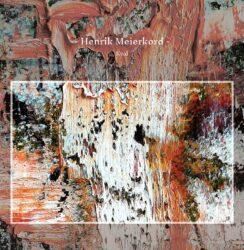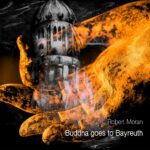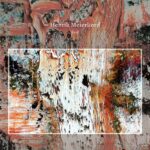ROBERT MORAN – BUDDHA GOES TO BAYREUTH
When starting to listen to the opening of Buddha Goes To Bayreuth, you’ll know that you’re about to venture into a large-scale modern classical composition. And you are, since the two parts of this composition (23’24” and 43’05” respectively) are performed by two choirs (Kammerchor KlangScala Salzburg), two string ensembles (Stuttgarter Kammerorchester), and a solo countertenor (Stefan Görgner, on Part 1 only).
But “a very long reverb” is explicitly mentioned as one of the performers … and thát’s where the (somewhat unusual) ‘ambience’ of this piece comes in.
It is said that Richard Wagner originally thought to write an opera about the life of Buddha, but he never did. Robert Moran completed the task in this composition that was commissioned in 2011. Hence the composition’s strange title.
“It takes a vast theme and projects it into an even vaster room, where time and space are one, spirit and sound.”
The compositional process, as Moran describes it, is a fairly complex mix of using the I Ching (which he was given by his friend John Cage), selecting favorite chords from the orchestral score of Parsifal, and re-orchestrating them for one or the other choruses and/or string groups.
You will not recognize the Parsifal chords, however, since this chance re-arrangement results in a totally different composition.
The original commissioned piece is Part 2. Here, the reverb is one of the lead ‘performers’, giving the composition its spatial (- spacial, space-ial? -) qualities. In 2014, Moran added Part 1, adding the solo countertenor to the original two choruses and two string ensembles. The texts, which are intentionally unrecognisable while floating in the environment, are taken from fragments of ancient mantras.
Even if all this is interesting enough, you don’t need to know all this background information to enjoy this piece. To me, combining the (double) choirs and string ensemble with the 12-second delay of the Salzburg cathedral had a mesmerizing effect. You can literally hear the cathedral ‘respond’ to the choir at some moments, while at other times you’ll literally drown in an all-encompassing sound.
ROBERT MORAN – BUDDHA GOES TO BAYREUTH Part II [Fragment]
HENRIK MEIERKORD – KVAL 
“Meditative ambient cello” is a prefect sound for the cold and dark winter days, the sound that makes you wallow in deep melancholy. But perhaps also a sound that can be a bit too dark if you’re prone to winter (or seasonal) depression.
Henrik Meierkord aims “to achieve atmospheres with sound and music that creates thought and images”. And that is exactly what he does on Kval, a full-length album with 13 tracks spanning 74 minutes.
The album starts in a somber mood, which can be read from the Swedish titles that translate to blurry, sorrow, respite, suffering/choice. But reading the other titles, you can see that the mood is not going to be unbearable: there is hope, light, and confidence in titles like Dawn, Butterfly, Save/Free, Dream, Wind, Breathing Space.
“A sense of accepting life’s burden begins to seep into the narrative, at first challenging but eventually reassuring, bringing much-needed peace to life’s patterns.”
Stockholm-based artist Henrik Meierkord is a classically trained cellist who wrote music for films and games and who worked on many different projects. His music – especially that on Kval – may be rooted in “centuries-old ancestral memory”, but his sound definitely is contemporary.
Though most of his music is self-released, this is the third release on the Ambientologist label.





